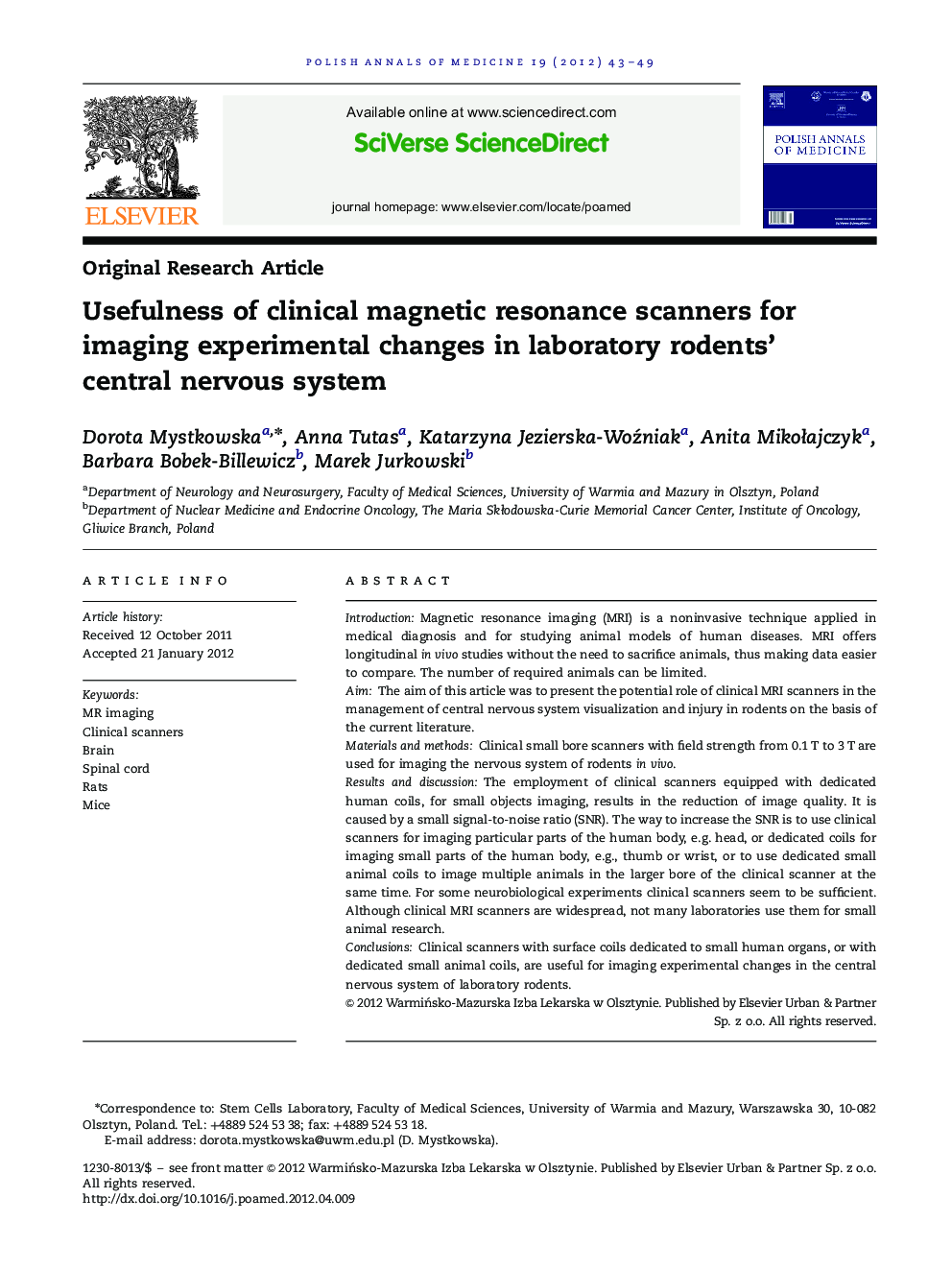| Article ID | Journal | Published Year | Pages | File Type |
|---|---|---|---|---|
| 2675951 | Polish Annals of Medicine | 2012 | 7 Pages |
IntroductionMagnetic resonance imaging (MRI) is a noninvasive technique applied in medical diagnosis and for studying animal models of human diseases. MRI offers longitudinal in vivo studies without the need to sacrifice animals, thus making data easier to compare. The number of required animals can be limited.AimThe aim of this article was to present the potential role of clinical MRI scanners in the management of central nervous system visualization and injury in rodents on the basis of the current literature.Materials and methodsClinical small bore scanners with field strength from 0.1 T to 3 T are used for imaging the nervous system of rodents in vivo.Results and discussionThe employment of clinical scanners equipped with dedicated human coils, for small objects imaging, results in the reduction of image quality. It is caused by a small signal-to-noise ratio (SNR). The way to increase the SNR is to use clinical scanners for imaging particular parts of the human body, e.g. head, or dedicated coils for imaging small parts of the human body, e.g., thumb or wrist, or to use dedicated small animal coils to image multiple animals in the larger bore of the clinical scanner at the same time. For some neurobiological experiments clinical scanners seem to be sufficient. Although clinical MRI scanners are widespread, not many laboratories use them for small animal research.ConclusionsClinical scanners with surface coils dedicated to small human organs, or with dedicated small animal coils, are useful for imaging experimental changes in the central nervous system of laboratory rodents.
